SOLVED
Unlocking the Mysteries of the Inhabitants,
Languages and Religions of the World
Migration
For some it is a great mystery as to how the Americas were populated, but according to God's Word, the tribes of the Americas would have migrated from Babel not long after God confused their language for we are told, “from thence did the LORD scatter them abroad upon the face of all the earth” (Genesis 11:9).
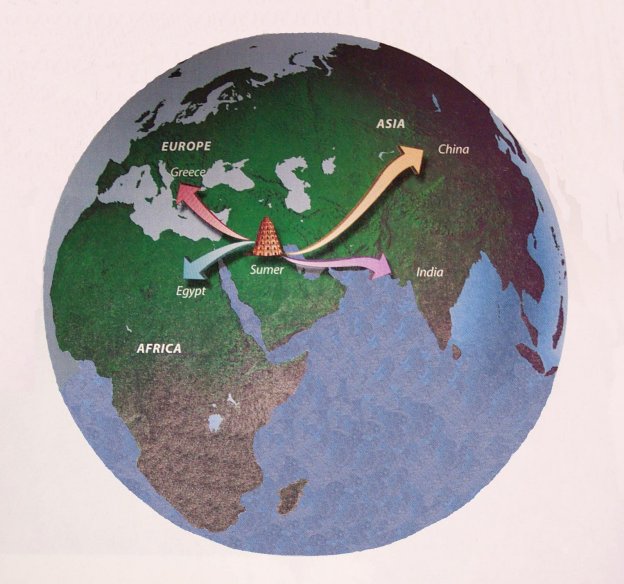
After confounding their language, God scattered them throughout the whole world creating all the different nations of the world. Each family now spoke with a new language, “every one after his tongue, after their families, in their nations” (Genesis 10:5). The Native Americans must therefore be the descendants of those original rebels who were scattered abroad from Babel.
Their migration is presumed to have taken place by ship or else by land across the Bering Strait. Today, the Strait is 85 kilometers wide and on a clear day, the mountains of eastern Siberia can be seen across the Strait from Alaska.
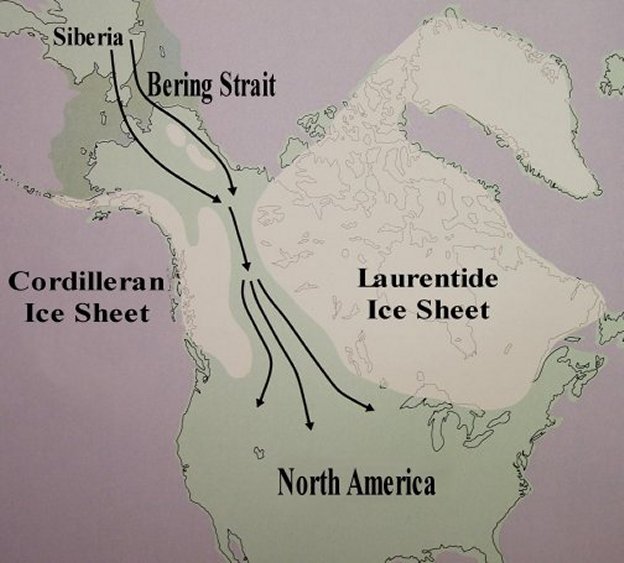
Many scientists theorize that much of the oceans waters were locked up in massive ice sheets during the “Ice Age” that was caused by the Genesis Flood. This would have resulted in reduced ocean levels estimated to be 50 to 100 meters lower than they are now. This, in combination with earth movements and tectonic factors, could have produced a land bridge between the two continents. The Bering Strait only averages between 30 and 50 meters deep, so the possibility of a land bridge is plausible.
Geological evidence also suggests that there was a corridor between the Cordilleran and Laurentide ice sheets that would have provided an ice-free passage from Alaska down into the heart of North America. The Columbia River (2000 km long), flowing down through the Rocky Mountain Trench, could also have provided a natural highway into the Americas.
While man could have come by ship, this could not account for all the other land dwelling species of wildlife that inhabit the Americas today. Another ark would have been necessary to transport all the animals across the Strait. Therefore we maintain that the land bridge theory is the best possible scenario for populating the Americas.
Today, there is no dispute whether or not there was an “Ice Age”, however, there is some dispute as to how many Ice Ages there have been in the past. Some glacial geologists believe there were as many as 30 “Ice Ages” over millions of years, but from a creationist's point of view, there was only one “Ice Age” and it was a direct and relatively recent effect of the Genesis Flood.
We will briefly mention some of the determining factors that have led creation scientists to the conclusion that the Genesis Flood was the sole cause of the Ice Age. First of all we must ask, what atmospheric, geologic, and climactic factors would be necessary to produce an Ice Age?
Some scientists have thought that colder winters would cause an Ice Age. But winters where ancient ice sheets are known to have existed in the past are very cold now and no ice sheets are being formed there at the present time.
Extremely cold winters have a tendency to produce dry weather with very little precipitation. In order to produce an Ice Age, more snowfall would be required in the winter along with cooler temperatures in the summer. This would allow the snow to accumulate year after year without completely melting during the summer. If more snowfall and cooler summers were necessary to produce an Ice Age, what factors then would be required to produce them?
It is quite interesting that the fossil record indicates that we are living in a world that is very different from the past. For example, there are fossil palm trees in Alaska, and giant redwoods above the Arctic Circle.
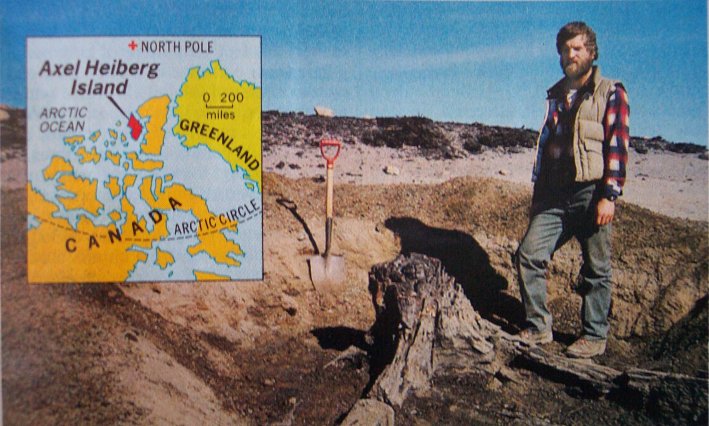
There are coal seams found near the North and South Poles indicating that an abundance of subtropical vegetation once grew there. Fossilized coral, which requires temperatures of at least 20 degrees Celsius to survive, is also found near both poles. Such evidence suggests a world that had a more uniform climate and warmer oceans in the past.
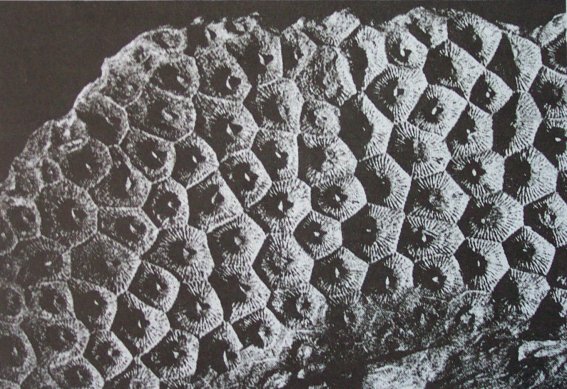
The harsh environments that exist today do not seem consistent with God's “very good” (Genesis 1:31) creation in the beginning. What in the world happened? The Bible indicates that when God created the heavens and the earth, originally, there were “waters … above the firmament” (Genesis 1:6-8). This “water vapor canopy” above the atmosphere may have acted like a solar blanket producing a “greenhouse effect” with a more stable climate. However, today there is no evidence of a water vapor canopy. So what happened to the “waters which were above” (Genesis 1:7) the atmosphere?
When the Genesis Flood came upon the world, the Bible says, “all the fountains of the great deep [were] broken up, and the windows of heaven were opened. And the rain was upon the earth forty days and forty nights” (Genesis 7:11-12). It appears that the waters above the atmosphere coalesced and were rained down upon the earth through the “windows of heaven”. With the water canopy now gone, more solar radiation could escape out of the atmosphere, thereby diminishing the “Greenhouse Effect”.
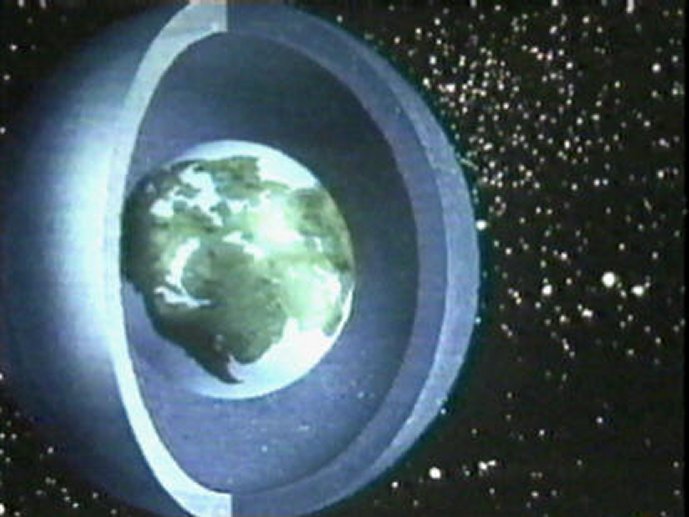
It should be noted that there were two sources for the Floodwaters, “rain” from above and “fountains of the great deep”. The Bible tells us that the Lord “stretched out the earth above the waters” (Psalm 136:6) and during the Flood, the fountains of the great deep “brake forth, as if it had issued out of the womb” (Job 38:8). The crust of the earth was fractured and water came gushing forth everywhere through fissures in the earth.
There is a good possibility that volcanic materials came out of some of these fractures as well. Today we live in a world that contains tens of thousands of volcanoes and seamounts. Relatively few of these are active today, however, these could very well be the remaining scars imposed by the breakup of “the great deep”.
The earth's interior is very hot, increasing at a rate of about 30 Celsius per kilometer. Warm water contained in aquifers from “the great deep”, along with underwater volcanic activity and geothermal vents in the seafloor could have warmed the oceans even more than the tropical temperatures that already existed in the pre-Flood world.
At the same time, land based volcanoes would have pumped large quantities of dust and aerosols into the atmosphere, blocking out much of the suns radiation, reflecting it back into space.
There is ample evidence for a higher rate of volcanic activity in the not so distant past. This can be observed in the strata around the world, which contains abundant layers of ash and lava mixed with sedimentary rocks. The increase of volcanic activity along with the collapse of the water vapor canopy would have compounded the cooling effect on the earth.
One does not have to be a climatologist to understand what happens when warm humid air from the ocean collides with a cold landmass. It causes the humidity to condense and fall out of the atmosphere in the form of precipitation. This effect would have resulted in large amounts of snowfall being dumped in the mid to high latitudes. With cooler summers, not all of the snow would be able to melt and over the years the snow would build up and compact to form the glaciers of the Ice Age.

Cooler summers would have persisted for many years after the Genesis Flood, especially if a number of volcanoes were still active, pumping dust and aerosols into the atmosphere.
When just one volcano erupted in 1991 (Mt. Pinatubo), it decreased the average temperature in the northern hemisphere by .6 degrees Celsius. For several years after it erupted, the summers were much cooler than normal with higher precipitation. It is not hard to imagine what would happen if hundreds, or perhaps thousands of volcanoes were to erupt in a short timeframe following the Genesis Flood.
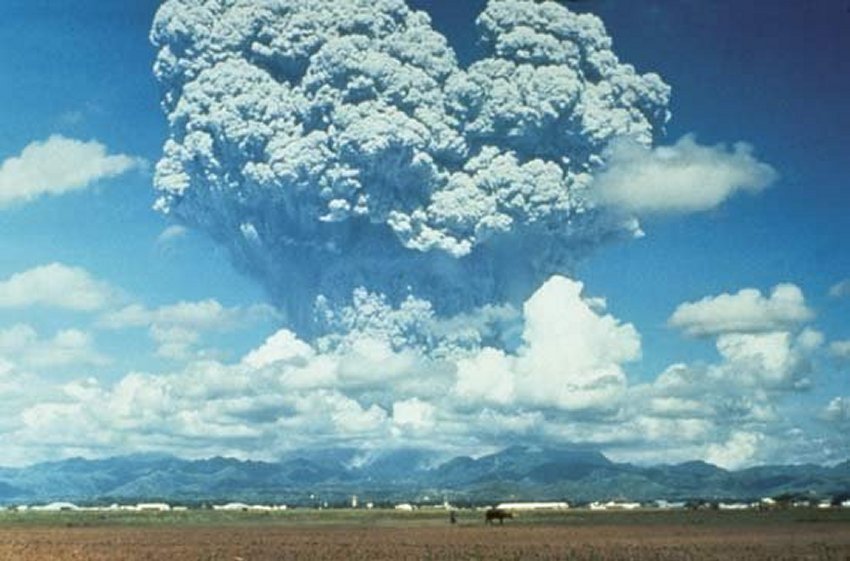
Continental glaciers would first begin to advance over the higher latitudes, and as the oceans cooled down, polar ice caps would begin to form. However, as the oceans began to cool there would be less humidity resulting in fewer clouds, which would allow more of the sun's rays to reach the earth's surface generating warmer summers.
With fewer clouds there would also be less precipitation. Furthermore, if the frequency of volcanic activity diminished, there would be less dust and aerosols in the atmosphere allowing even more of the sun's rays to reach the earth's surface. The overall effect would begin to melt the glaciers. As the glaciers melted, the ocean levels would begin to rise, and the Bering Strait Land Bridge would once again be flooded.
Some have calculated that from the time of the Genesis Flood to maximum glaciations would have taken around 500 years. After this, the glaciers would begin their retreat. These calculations are based on the time it would take for the oceans to give up enough heat to reach an appropriate threshold temperature. Lower humidity would result in reduced amounts of snowfall and the volume of global ice would begin to decrease during warmer summers.
At the beginning of the Post-Flood era, coastal regions would have been quite temperate for many years after the Flood due to the latent heat in the ocean. This would have made costal migration a real possibility. Ice sheets would begin forming inland in the upper latitudes first and then begin expanding toward the coastal regions as the surface of the oceans began to cool.
As the temperature of the oceans dwindled, the atmospheric moisture would decline proportionately resulting in reduced cloudiness and snowfall. With a reduction in cloudiness, the radiation of the sun would be able to reach the earth's surface doing its work of melting the snow and ice and the Ice Age would begin its retreat.
Today there is much talk about “Global Warming” and “Climate Change”. We are observing some glaciers still retreating and the polar ice caps are alleged to be shrinking. Alarmists are blaming all of this on the burning of fossil fuels, which produce carbon dioxide. However, it should be kept in mind, that carbon dioxide (CO2) is no more a pollutant than oxygen or nitrogen. CO2 is required for life on earth. It is plant food, an ingredient that is essential for photosynthesis. Maybe the real reason for “Global Warming” is that we are at the tail end of a not so distant Ice Age that was caused by the Genesis Flood.
We conclude, therefore, that the Genesis Flood was the main mechanism that brought on the Ice Age making it possible for man to migrate into the Americas during that brief window of opportunity when ocean levels dropped enough during the Ice Age to create a land bridge across the Bering Straits.
However, once the Bering Strait land bridge was flooded, the Americas were isolated from the rest of the world and pretty much forgotten until Columbus rediscovered them more than 500 years ago.
